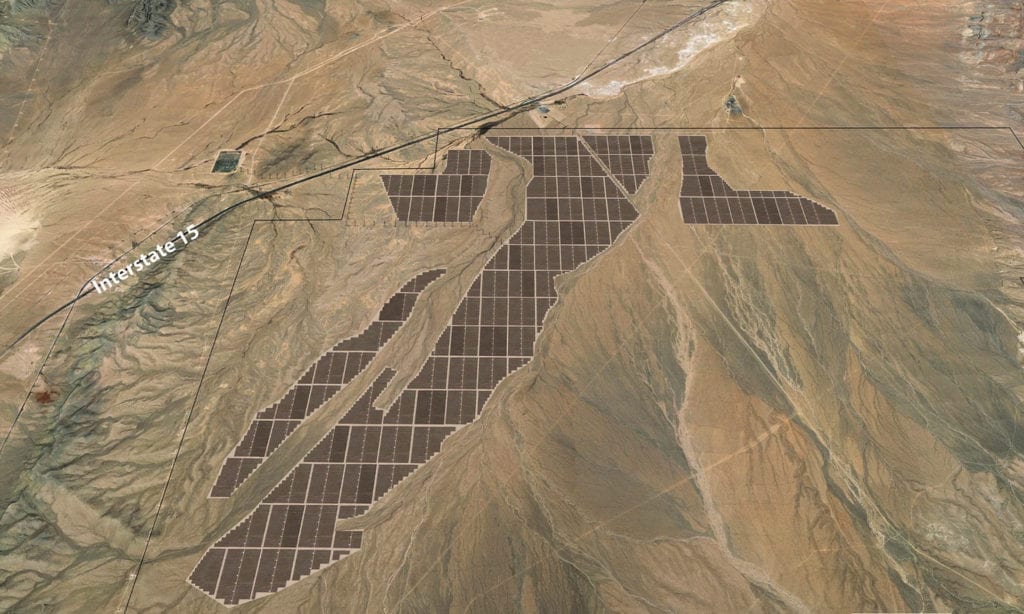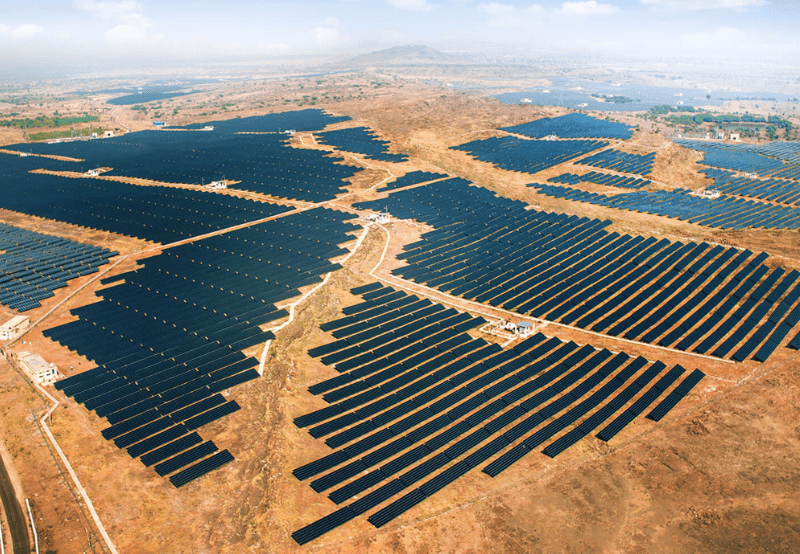Feds Approve Largest U.S. Solar Project
A Nevada installation that would be the largest solar power project in U.S. history was approved by the U.S. Department of the Interior on May 11. The estimated $1 billion, 690-MW Gemini solar photovoltaic electric generating facility is sited on 7,000 acres about 30 miles northeast of Las Vegas.
Interior Secretary David L. Bernhardt signed the Record of Decision (ROD) that paves the way for Redwood City, California–based Solar Partners XI to build the facility. Solar Partners, a consortium that includes NV Energy, a subsidiary of Warren Buffett’s Berkshire Hathaway Energy, first announced its intention for the project in July 2017, saying it would work with the federal Bureau of Land Management (BLM) on the project, which will use federal land (Figure 1).
The project will include four large lithium-ion batteries
capable of storing up to 380 MW of solar energy for up to four hours.
‘Investment in American Energy’
The ROD approves a right-of-way grant for the project, along with authorizing 34.5-kV overhead and underground collector lines, a 2-acre operation and maintenance facility, three substations, internal access roads, access roads along generation tie-lines, a perimeter road, perimeter fencing, water storage tanks for fire protection, drainage control features, a potential on-site water well or a new water pipeline, and improvements to the existing NV Energy facilities to support grid interconnection.

“This action is about getting Americans back to work,
strengthening communities and promoting investment in American energy,” said
Casey Hammond, an Interior Dept. official, in a news release. “Domestic energy
production on Federal lands remains fundamental to our national security.”
Bernhardt, noting the damage to the U.S. economy caused by the COVID-19 pandemic, said, “Our economic resurgence will rely on getting America back to work, and this project delivers on that objective.”
David Scaysbrook, co-founder and managing partner of Quinbrook Infrastructure Partners, one of the developers of the project, in an email to POWER wrote, “We are very pleased to have reached a satisfying and final seal of approval from the Department of the Interior and the Bureau of Land Management so that we can now take Gemini forward with confidence. This final decision officially clears the pathway for Quinbrook, and our development partners at Arevia, to accelerate completion of detailed project designs and procurement plans for one of the world’s largest renewables projects ever undertaken. Gemini offers the opportunity to showcase, at an unprecedented scale, what we believe to be one of the most promising technological advances in coupling battery storage to utility-scale solar power to produce low-cost renewable energy over the long term. Gemini will benefit all Nevadans by supporting jobs, stimulating the local economy and capturing the state’s abundant solar resources to deliver low-cost, renewable power to NV Energy customers.”
Project Was Delayed
Government officials on Monday praised the project’s
approval, though federal sign-off on the installation had been delayed for
months. The BLM earlier
missed two deadlines to approve Gemini, in part due to an extended
environmental review that included a look at the project’s impact on historical
areas, including a railroad camp on the Moapa River Indian Reservation, and the
Old Spanish National Historic Trail, used by early settlers moving through the
area from the 1830s to the 1860s.
The BLM and Solar Partners XI in Monday’s news release said
the groups have “developed measures to avoid, minimize and mitigate impacts to
other resources including, but not limited to, visual resources, cultural and
tribal resources, recreation access and air quality.”
NV Energy already had negotiated a 25-year power purchase
agreement rate of $38.44/MWh for the project. NV Energy in December 2019
secured approval from the Public Utilities Commission of Nevada (PUCN) for
about 1.20 GW of new solar projects, including Gemini, along with 590 MW of
energy storage capacity.
The solar power industry was quick to praise Monday’s
approval. “Despite the challenges of the coronarivus, we’re pleased to see that
Nevada will soon be home to one of the biggest solar projects in the world,”
said Abigail Ross Hopper, president and CEO of the Solar Energy Industries
Association. “The solar industry is resilient and a project like this one will
bring jobs and private investment to the state when we need it most. We
appreciate the work the Trump administration has done to make this historic
project a reality.”
$712.5 Million Economic Impact
The Gemini project marks the third time the Trump administration’s BLM has approved a solar power project on federal lands. The agency approved an 80-MW project in Wyoming in June 2018, as well as a 550-MW solar farm near Joshua Tree National Park in California in November 2018.

Interior officials noted the project’s economic impact, saying
the “on-site construction workforce is anticipated to average 500 to 700
construction workers, with a peak of up to 900 workers at any given time,
supporting up to an additional 1,100 jobs in the local community and injecting
an estimated $712.5 million into the economy in wages and total output during
construction.”
The project’s construction timeline includes two phases. The first phase is expected to begin commercial operation next year, with both phases expected to be in operation in 2022. Gemini would be the world’s eighth-largest solar installation based on current rankings. The 2,245-MW Bhadla Solar Park in India (Figue 2) is the world’s largest solar farm, followed by the 1,547-MW Tengger Desert Solar Park in China.
—Darrell Proctor is associate editor for POWER (@DarrellProctor1, @POWERmagazine).